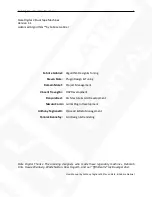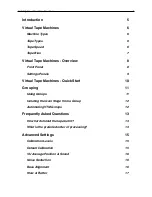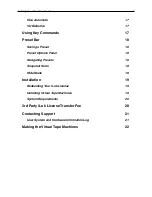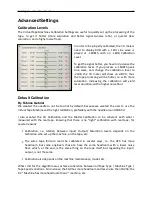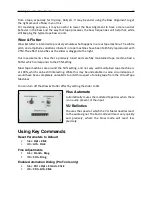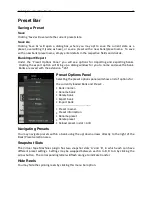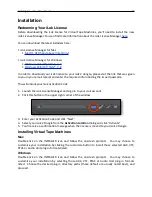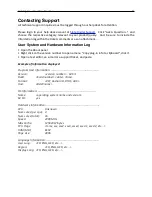
Slate Digital -‐ Virtual Tape Machines 6
Virtual Tape Machines
!
Many of you out there are familiar with the physics of tape machine, it’s speeds, and the various
tape formulas that have been introduced over the last few decades. For those of you who are
not, here is a crash course.
Machine Types
!
2-Inch 16-Track
!
This is the 2-‐inch Studer A827 with 16-‐track headstock from NRG Recording Studios. This
machine has recorded some of the biggest albums in the world. It has a fat, punchy, thick sound
with a very detailed top end. This is the ulPmate tracking machine.
½
Inch 2 Track
!
This is the 2-‐track Studer A80 RC with ½-‐inch headstock from Howie Weinberg Mastering. Many
recordings have been mastered onto this deck, and it’s obvious why! It has a thick low end, nice
rich midrange, and a smooth top that perfectly takes away the digital edge in the most natural
way.
Tape Types
!
The tape formulaPons that we modeled are two of my favorites, the classic 456 and the more
modern GP9. I picked these tapes based on my years of using both, and my knowledge that
these represent two very unique sounds.
FG456
!
456 was introduced in 1975 as a “high output” tape formula that was needed since new tape
decks at the Pme were able to handle higher headroom signals in their electronics. 456 is
known as a “+6” tape, which means it’s +6dB over the 185 nWb/m standard… which means you
have an addiPonal 6dB of headroom before tape saturaPon occurs.
FG9
!
GP9 is a more modern tape that has an even thicker layer of oxide and is known as a “+9” tape
(570 nWb/m). GP9 became very popular because you could record at ho\er levels and not have
the same introducPon of saturaPon and distorPon.
While the sound of these tapes is subjecPve, what we noPce is that 456 is a bit more colorful
with slightly thicker lows. Switching to GP9, you’ll noPce more punch, due to the fact that you
have 3db more headroom before saturaPon. You may also noPce more definiPon throughout
the frequency spectrum, and a slightly more forward sound. Both of these tape types sound
really good, and we suggest to experiment with both of them.
Tape Speed
!
“IPS” means inches per second, as in the number of inches of tape that spin around the heads
per second. The two professional recording tape speeds are 15ips and 30ips, which were the
speeds that we modeled on both of our 2-‐inch and ½-‐inch decks.
!
So what are the sonic differences between these speeds? This is a quesPon that is based on
many factors including the machine type, the way it is aligned, and the tape formula.


